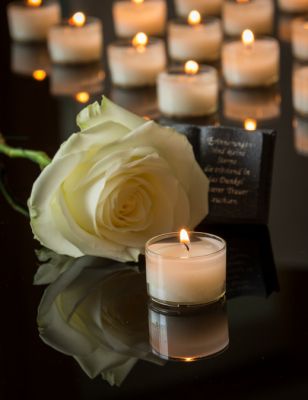 In the West, a funeral is usually where you’d pay your last respects to a deceased person. Yet both older and newer alternative traditions exist that still let family give an honorable, memorable goodbye to a loved one. In places such as Canada, the United States and parts of the United Kingdom, some are opting to hold a “celebration of life” for their beloved relative as a happier alternative to a funeral. However, it’s not the only type of upbeat final send-off, and celebrating a departed loved one is also not a purely Western trend.
In the West, a funeral is usually where you’d pay your last respects to a deceased person. Yet both older and newer alternative traditions exist that still let family give an honorable, memorable goodbye to a loved one. In places such as Canada, the United States and parts of the United Kingdom, some are opting to hold a “celebration of life” for their beloved relative as a happier alternative to a funeral. However, it’s not the only type of upbeat final send-off, and celebrating a departed loved one is also not a purely Western trend.
A Peek Back in Time to Jim Henson’s Memorial
The 1990 memorial service for Jim Henson, known best for weaving multifarious magical worlds full of Muppet creations, was anything but ordinary. When documenting his final wishes, Henson requested that no one wear black to the service. An archived New York Times article from 1990 describes both tears and laughter as congregants waved colorful foam butterfly wands, music was played by the Dirty Dozen Dixieland Brass Band, performance tributes were offered by close friends, colleagues and family. One image that stays with many people today is that of Big Bird singing “It’s Not Easy Being Green.”
Joyful Commemoration and Mourning in Irish Wakes
The Irish wake can best be described as a blend of sadness and celebration. A November 2016 Irish Central piece describes the custom in detail, emphasizing that an Irish wake allows family, friends and community members who knew the deceased to attend and keep a vigil until the actual funeral is held. While one might hear open weeping and wailing, the three-day period of an Irish wake would also be filled with songs, poetry, dancing, bawdy jokes, fond stories, and toasts in honor of the departed person.
Jazz Funerals and the “Second Line”
Over the last century or so, New Orleans has developed its own way of saying goodbye to a community member. Jazz funerals likely date back to the early 20th century and result from the blending of older customs from West Africa with the city’s burgeoning music culture. As black musicians improvised and developed jazz music, they used their new techniques at all events, including funerals. Cultural encyclopedia website Know Louisiana also pointed out that brass bands were favored at memorials by the city’s citizens, regardless of their race or ethnicity. The tradition of mourning followed by rejoicing has manifested in the “second line,” with its parade marchers breaking out into high-spirited music and dancing after the coffin has been interred and the procession leaves the cemetery.
Funerals in Ghana: Music, Dancing and Elaborate Coffins
Jazz funeral traditions may have origins in West Africa, but celebratory funerals are also common in modern-day Ghana. In a 2014 CNN article, Paula Newton described elaborate send-offs with large numbers of mourners, which Ghanaians take as a sign that the deceased was well-loved by the community. Bereaved families serve as hosts, providing food, drinks and entertainment. Departed loved ones are buried in distinctive, artistically crafted coffins that resemble their personalities, professions, hobbies or favorite objects. These extravagant social events are jubilant commemorations of a person’s life where attendees are free to both weep and rejoice.
Joyful Celebration for Departed Loved Ones Are Not New
Critiques of the Western “celebration of life” trend may feel that they may be robbed of the ability to express their grief. Writing for Huffington Post Canada, Rondi Adamson cautions that this can be the unintended result of discouraging sadness during a memorial service and adds that she still prefers to call them “funerals.” Yet as Jim Henson’s memorial service, Irish wakes, jazz funerals and Ghanaian send-offs prove, such events can be cathartic if a wide range of emotional expression is permitted.
Add Your Comment